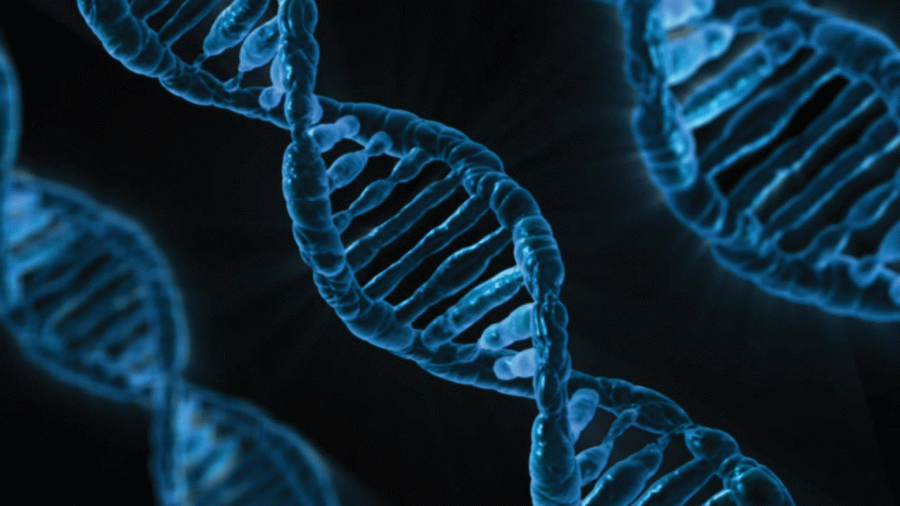The Reality of Designer Babies: We, the Determinant
Over Thanksgiving break, I visited my maternal grandparents in a small house in rural Georgia. They aren’t poor, but as they’ve gotten older, as some do, they’ve grown acquainted to the countryside. The town they live in is half the size of our very own Hamilton, at a population of 1,700 people, and it shows; the dinner included straight-faced discussions about “greys,” “reptilians,” “Nordic” aliens and one guest wearing a Call of Duty: Advanced Warfare shirt and drinking from a liter bottle of Mountain Dew.
Amidst these discussions, the out-of-place sound of a mousey, curly-haired man in a suit speaking in a soft tone came from the television, as my grandfather, pushed back into a lounging chair, watched a national science festival talk on quantum mechanics. He was engrossed in it, and avidly watched the next talk on electron displacement that followed. He was so engrossed that he only looked up to greet me as I came through the door, with an almost unintelligible, sputtered greeting and a quivering handshake, too weak to even stand.
My grandfather, at one time, was a brilliant physicist who served a naval career nearly as distinguished as his professorial tenure. Today, he is so feeble that he has to watch television – he is no longer able to read books. The thing is, he doesn’t suffer from particular physical weakness or disability. What he suffers from is neurodegenerative disease; a slow, painful erosion of his capacity to think and function. He’s far from alone: well over five million people in the U.S. suffer from Alzheimer’s, which is the most common neurodegenerative disease in our country.
With Alzheimer’s, as with nearly all neurodegenerative diseases, a key component is genetics. Scientists can’t yet determine exact ratios or probabilities, but it is known that certain genetic patterns significantly increase and decrease the likelihood of having various neurodegenerative diseases. Genetics is a common phrase with life-ruining diseases. There’s a significant genetic component to autism. There’s a significant genetic component to Down syndrome. There’s a significant genetic component to anxiety, depression, cystic fibrosis, mental retardation, schizophrenia, obsessive compulsive disorder, eating disorders, heart failure and sociopathy – nearly everything capable of taking your life gets its roots from your genetics.
Genetics aren’t the sole determinant, of course. Sometimes people defy the odds and develop Down syndrome or Huntington’s in spite of their genes, or at least to our present understanding of them. But they’re outliers, people off the beaten path. If your genes are prone to depression or sociopathy, you’re screwed. The odds of you defeating it are slim at best. The genetic lottery has been an unavoidable part of nature for much longer than humans have been around, and it’s not just limited to diseases and disorders. Your height, attractiveness and your intelligence are all basically out of your hands.
Until now.
For the first time in human history, a few slim, scattered methods of choice genetic selection are appearing. Our understanding of genetics and human reproduction are at its first and greatest tipping point today, as the
methods proposed by scientists of selecting specific embryos to fertilize and analyzing, or even editing genomes of fertilized embryos are finally leaving the realm of science fiction and becoming reality. In other words, the pipe dream of a “designer baby” with perfect skin and baby blue eyes stopped being a pipe dream about five years ago. It’s reality. And one of the most hotly contested pieces of it.
Search “designer baby” on Google and you’ll find a collection of charming articles: “Designer babies ethical?”, “Designer Baby debate should start” and “Designer babies: an ethical horror waiting to happen.” Filled with references to Brave New World and Nazi-visions of “breeding a superior race,” these articles drum up terror by speaking of pricey elite-only processes and nonsensical leaps to authoritarian governments creating “slave races.” More than these weak stances (60 years ago, a computer capable of basic calculation cost seven million dollars; all new technologies are expensive and become cheaper) and fallacious leaps of logic, the terror is brought by a sense of ultimate responsibility upon the reader: who are you to determine what genes are good and what is beautiful?
They make me furious.
No one wants to be fated to intense depression. No one wants to be born with Down syndrome or severe retardation. No one wants to be born with barely functional lungs, choking on their own blood at three-years-old. And when we finally, after five thousand long, arduous years of technological advancement from the first cities of man, are finally, finally able to end these afflictions forever, these articles call it “evil”?
Who am I to determine what genes are “good”? I am humanity, the same humanity that has determined what is right and wrong since the first tribe cast out a murderer. I am a man looking into the still-sharp eyes of a brilliant scientist who sputters turkey and thickened wine over a bib. It is now within our power to make sure no one suffers like that ever again – no one with Down syndrome, sociopathy or schizophrenia. It is our obligation to ensure they don’t.
Contact Max Goldenberg at [email protected].









